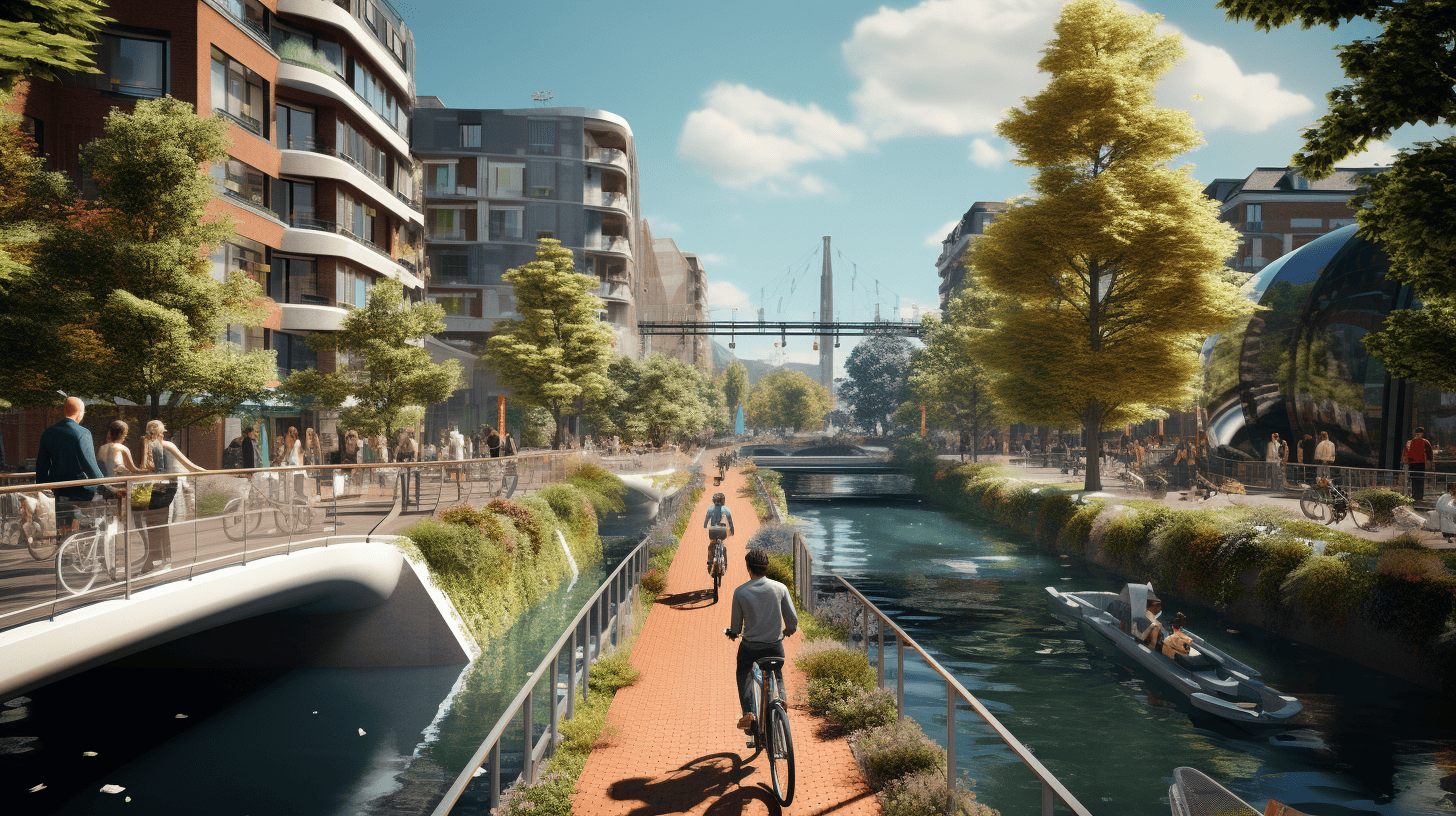
The infrastructure in the Netherlands is among the best in Europe. The quality of road surfaces, for example, is high. Many types of infrastructure, such as bridges and viaducts, are now quite old. On average, bridges can be used for about 100 years. After 80 years, more maintenance is often needed. “In the Netherlands, a lot of bridges were built between 1950 and 1970. So, we will have to renovate a lot in the coming years”, says Seirgei Miller, associate professor of civil engineering at the University of Twente (UT). That’s a big task but also an interesting opportunity. There will be room for circularity, sustainability, and the introduction of smarter solutions.
Why you need to know this:
To reduce CO2 emissions, we need to change the way we build. In doing so, there is also an increasing focus on the well-being of people in the built environment. These are important developments that contribute to the city of the future. These scientists focus on circular and flexible infrastructure and explain the opportunities and pitfalls.
“Previously, minimizing costs was always the main starting point for construction. I think another basic premise should be added to that now; minimizing emissions,” says Yuguang Yang, associated professor in concrete structures at TU Delft. For this we need a different mindset, agrees Miller: “To meet the deadline (of the Paris agreement, ed.), we have to innovate and take some financial risks with that. That goes for both companies and the government. We need to take off the conservative cap and put on the innovative cap. Let’s take steps together and share the risks.”
Learning by doing
Both Miller and Yang have been working on several infrastructure research projects for years. Miller focuses particularly on asphalt; he is in day-to-day charge of UT’s Asphalt Paving Research and Innovation Unit (ASPARI). Here he does not focus so much on the material itself, but rather looks at improving the process around it. Think, for example, of digitizing the asphalt supply chain or (semi) automating the process of constructing asphalt layers.
Several large construction companies and Rijkswaterstaat (the National Department of Public Works) are also affiliated with this field lab. “The nice thing about this setting is that you can learn by doing. We develop a lot of knowledge, both for science and business, and education. I think it’s essential to look at the development of both technology and human capital. What training programs do we need in response to the new technologies? I think we should consider this at the same time as technological development. The people who ultimately have to work in this sector are just as important as the technology itself. This is why we use the knowledge we gain in turn in the teaching materials for universities, universities of applied sciences, and MBOs,” Miller said.
Yang’s research focuses particularly on concrete bridges. He develops methods and models to determine whether bridge structures are safe over time. His research group also works with the Department of Public Works (Rijkswaterstaat).
Digital and sustainable
Both researchers are involved in 4TU.Built Environment, the partnership between the engineering faculties of the four technical universities in the Netherlands. Within this collaboration, several teams are active on various themes. One of the so-called Domain Acceleration Teams (DAT) focuses on infrastructure and mobility. The DAT initiates new research and is also the point of contact for people from the industry, the Topsectoren, and the government. Yang: “With the DAT, we want to work toward a smart, flexible, circular, and energy-neutral infrastructure that is available to everyone in the Netherlands. In doing so, we always look at ways to extend the life of existing infrastructure first. If that doesn’t work anymore, then we look at replacing parts.”
Within the DAT Infrastructure and Mobility, three themes are important: data-driven design and maintenance, the use of circular materials, and modular construction. A big component within all these themes is digitization. “With integrated sensors, we can collect a lot of data. For example, we can monitor the condition of bridges much better and perform targeted maintenance. That is cheaper and more sustainable because we throw away fewer materials,” explains Miller.
He sees a great opportunity in collecting and analyzing data to improve infrastructure today and in the future. “I think we can use this information to optimize infrastructure even further,” he says. Therefore, Miller advocates using more sensors on objects “on the move”, for example, on bicycles where the condition of roads and bike paths can be monitored almost continuously. With these, citizens can easily and quickly collect a lot of useful data.

Building bridges 2.0
Yang is working with his research group on a major project regarding new bridges. “We are going to construct a bridge with a completely new material called geopolymer concrete. The material consists largely of industrial waste, and no cement is used. That makes it a lot more sustainable. Producing cement is the main source of CO2 emission in concrete,” he says of the project. The bridge will be built in Friesland, in the north of the Netherlands. “It is a big step because so far, we have only tested the material on a small scale in the laboratory.”
He is also researching reusing old bridge elements. “When a bridge is demolished, it is usually not because it is in a bad condition. It is mostly because the plan of that part of the road has changed, for example, a wider road or a road for a different type of traffic is expected. The old bridge elements are still in good condition. That’s why we want to use them to build a new bridge. That will save a lot of CO2 emissions, both in the dissembling process of the old bridge and in the construction of the new one,” Yang said. In cooperation with companies, two bridges are now being built this way. “We are proud of that because it is not easy to get this done. Of course, the bridges have to meet all the safety requirements.”
Faster implementations
In addition to the scientific activities, Miller and Yang also want to work on updating the regulations and specifications regarding innovations in construction. “There are many good innovations, but the regulatory frameworks frequently struggle to keep pace with innovations. Modifying or replacing them takes an incredibly long time – sometimes up to ten years – and hampers the implementation of innovations. That’s a shame. We want to close the gap between innovation and implementation so we can develop and innovate faster,” Miller says.
Yang: “The world around infrastructure is, on the one hand, very innovative, but on the other hand, very conservative because it involves the safety of people who use the infrastructure daily. Then, people often tend to fall back on products and solutions they already know. We move forward, but the innovation process is slower than we want. That while advancing in construction is so much needed.”

